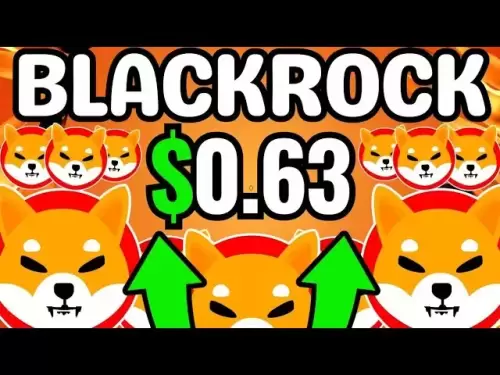-
 Bitcoin
Bitcoin $117700
-0.20% -
 Ethereum
Ethereum $3587
1.19% -
 XRP
XRP $3.422
-0.97% -
 Tether USDt
Tether USDt $1.000
-0.02% -
 BNB
BNB $733.3
0.69% -
 Solana
Solana $177.3
0.36% -
 USDC
USDC $0.9998
-0.01% -
 Dogecoin
Dogecoin $0.2446
1.42% -
 TRON
TRON $0.3183
-2.35% -
 Cardano
Cardano $0.8262
1.07% -
 Hyperliquid
Hyperliquid $44.37
-0.24% -
 Stellar
Stellar $0.4597
-0.87% -
 Sui
Sui $3.841
2.27% -
 Chainlink
Chainlink $18.44
3.20% -
 Hedera
Hedera $0.2658
1.54% -
 Bitcoin Cash
Bitcoin Cash $518.2
0.50% -
 Avalanche
Avalanche $24.38
4.08% -
 Shiba Inu
Shiba Inu $0.00001491
1.30% -
 Litecoin
Litecoin $112.7
10.87% -
 UNUS SED LEO
UNUS SED LEO $8.991
0.16% -
 Toncoin
Toncoin $3.183
-0.13% -
 Polkadot
Polkadot $4.377
3.56% -
 Uniswap
Uniswap $10.16
1.35% -
 Monero
Monero $325.1
2.08% -
 Ethena USDe
Ethena USDe $1.001
-0.01% -
 Bitget Token
Bitget Token $4.922
0.29% -
 Pepe
Pepe $0.00001343
3.62% -
 Dai
Dai $0.9999
-0.01% -
 Aave
Aave $319.5
-0.89% -
 Bittensor
Bittensor $416.3
1.23%
What are some examples of dApps?
Decentralized apps like Uniswap, Decentraland, and Aave are transforming finance, gaming, and social media by enabling trustless, user-driven interactions on blockchain networks such as Ethereum.
Jul 20, 2025 at 12:07 am
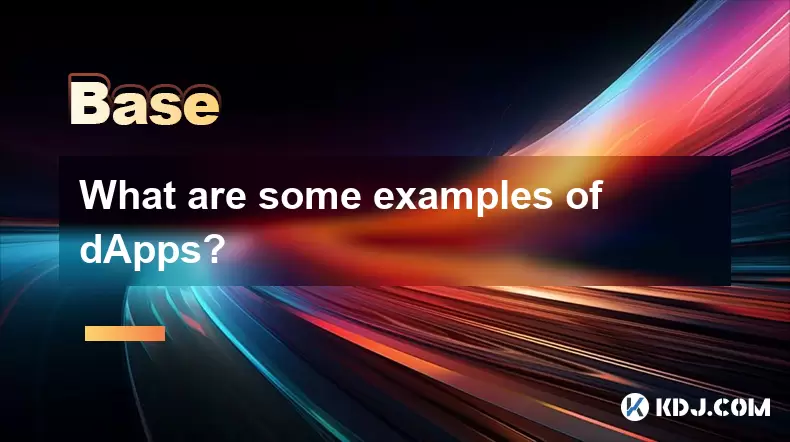
Decentralized Applications and Their Diverse Use Cases
Decentralized applications (dApps) are software applications that run on a blockchain or peer-to-peer (P2P) network of computers rather than a centralized server. These applications are open-source, operate autonomously, and have their data stored on a blockchain. They are a core component of the Ethereum ecosystem, although they can be built on other blockchain platforms like EOS, Tron, and Binance Smart Chain.
Below are some prominent examples of dApps across different sectors, including finance, gaming, and social media.
Uniswap: A Decentralized Finance (DeFi) Powerhouse
Uniswap is one of the most well-known decentralized exchanges (DEXs) built on the Ethereum blockchain. It allows users to trade ERC-20 tokens without relying on a centralized intermediary.
Key features of Uniswap include:
- Automated market maker (AMM) model that replaces traditional order books
- Permissionless liquidity pools where users can become liquidity providers
- Open-source code that allows anyone to audit or fork the platform
Users interact with Uniswap through web interfaces or wallet integrations like MetaMask, and all transactions are recorded on the Ethereum blockchain.
Decentraland: A Virtual World Powered by Blockchain
Decentraland is a blockchain-based virtual reality platform where users can buy, sell, and develop virtual land. It is powered by the MANA token, which is used for in-world purchases and governance.
Key aspects of Decentraland include:
- LAND parcels that are represented as non-fungible tokens (NFTs)
- User-generated content such as games, art galleries, and virtual stores
- Decentralized governance via the Decentraland DAO
To interact with Decentraland, users need a compatible wallet like MetaMask and ETH to purchase MANA. The platform is accessible through a web browser and supports VR integration for immersive experiences.
Aave: A Leading Decentralized Lending Protocol
Aave is a decentralized lending and borrowing platform built on Ethereum. It enables users to lend their crypto assets and earn interest or borrow assets by providing collateral.
Key features of Aave include:
- Flash loans that allow borrowing without collateral if the loan is repaid within the same transaction
- Variable and stable interest rates for lenders and borrowers
- Support for a wide range of cryptocurrencies, including stablecoins like DAI and USDC
To use Aave, users connect their wallet (e.g., MetaMask) to the Aave interface, choose an asset to deposit or borrow, and confirm the transaction on the Ethereum network.
CryptoKitties: The First Major NFT-Based Game
CryptoKitties is a blockchain-based game that allows players to collect, breed, and trade virtual cats. Each cat is a unique ERC-721 token, making it one of the earliest NFT-based dApps.
Key characteristics of CryptoKitties include:
- Collectible and tradable digital assets with unique traits and values
- Breeding mechanics that create new kittens with combined traits
- Marketplace functionality for buying and selling kittens
To play CryptoKitties, users need ETH and a compatible wallet like MetaMask. The game was so popular during its peak that it significantly slowed down the Ethereum network due to high congestion.
Steemit: A Blockchain-Based Social Media Platform
Steemit is a social media platform built on the Steem blockchain. Users earn cryptocurrency rewards for creating and curating content.
Key features of Steemit include:
- Content monetization through upvotes and rewards in STEEM tokens
- Decentralized governance and community moderation
- No advertising or centralized censorship
To join Steemit, users create an account using a Steem wallet, such as SteemConnect, and start posting or commenting. Earnings are based on the popularity and engagement of the content.
Frequently Asked Questions
Q: Can dApps be hacked or compromised?
A: While the underlying blockchain is secure, dApps can have vulnerabilities in their smart contracts. Bugs or exploits in the code can lead to loss of funds or data breaches. Auditing and using trusted dApps is crucial.
Q: Do I need cryptocurrency to use dApps?
A: Most dApps require some form of cryptocurrency for transactions, whether for paying gas fees or interacting with the platform. For example, Ethereum-based dApps require ETH for gas, while Steemit requires STEEM tokens.
Q: Are dApps anonymous to use?
A: dApps are pseudo-anonymous, meaning that transactions are tied to wallet addresses rather than personal identities. However, if a wallet is linked to a real-world identity, it can compromise anonymity.
Q: Can I build my own dApp?
A: Yes, anyone with knowledge of smart contract development (e.g., Solidity for Ethereum) can create a dApp. Developers can deploy their applications on public blockchains and interact with them using tools like Truffle, Hardhat, and MetaMask.
Disclaimer:info@kdj.com
The information provided is not trading advice. kdj.com does not assume any responsibility for any investments made based on the information provided in this article. Cryptocurrencies are highly volatile and it is highly recommended that you invest with caution after thorough research!
If you believe that the content used on this website infringes your copyright, please contact us immediately (info@kdj.com) and we will delete it promptly.
- XRP Mining, the GENIUS Act, and Coin Holders: A New Era?
- 2025-07-20 06:30:12
- Arctic Pablo Coin: Navigating the Icebound Estates Presale and Token Burn Strategy
- 2025-07-20 06:30:12
- Arctic Pablo Coin's Myth-Themed Presale: Icebound Estates and Beyond!
- 2025-07-20 06:50:12
- Snorter Token's Presale Success: Riding the GENIUS Act Wave in the Crypto World
- 2025-07-20 06:50:12
- PENGU Token's Breakout Momentum: Riding the Wave in a Bearish Market
- 2025-07-20 07:10:12
- Crypto's 100x Hunt in 2025: Beyond the Hype
- 2025-07-20 07:10:12
Related knowledge

What is the Inter-Blockchain Communication Protocol (IBC)?
Jul 19,2025 at 10:43am
Understanding the Inter-Blockchain Communication Protocol (IBC)The Inter-Blockchain Communication Protocol (IBC) is a cross-chain communication protoc...

How does sharding improve scalability?
Jul 20,2025 at 01:21am
Understanding Sharding in BlockchainSharding is a database partitioning technique that is increasingly being adopted in blockchain technology to enhan...

What is the "crypto trilemma" of scalability, security, and decentralization?
Jul 19,2025 at 06:28pm
Understanding the Concept of the Crypto TrilemmaThe crypto trilemma refers to the challenge of simultaneously achieving scalability, security, and dec...
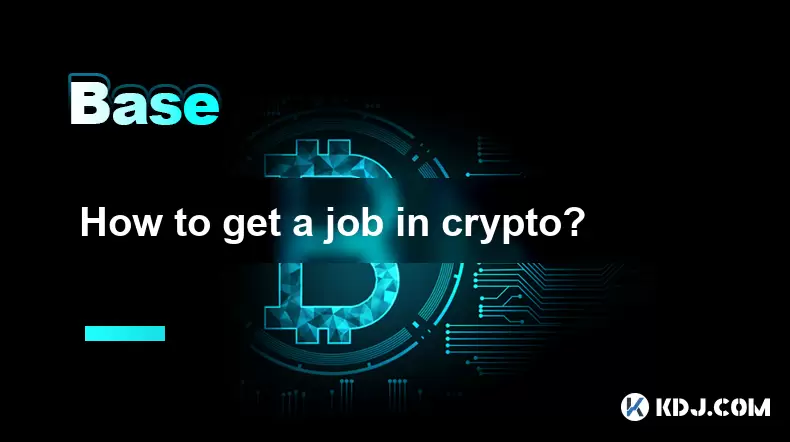
How to get a job in crypto?
Jul 20,2025 at 08:14am
Understanding the Crypto Industry LandscapeThe cryptocurrency industry is a rapidly evolving space that includes blockchain technology, decentralized ...
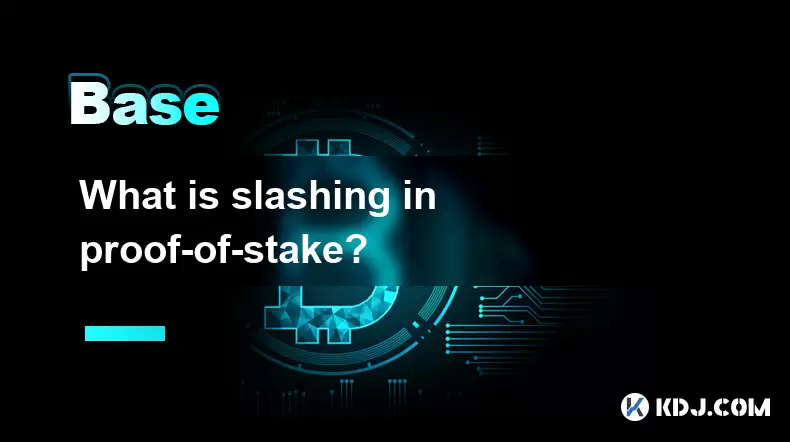
What is slashing in proof-of-stake?
Jul 20,2025 at 06:07am
Understanding Slashing in Proof-of-StakeIn a Proof-of-Stake (PoS) blockchain network, slashing refers to the penalty mechanism used to deter validator...
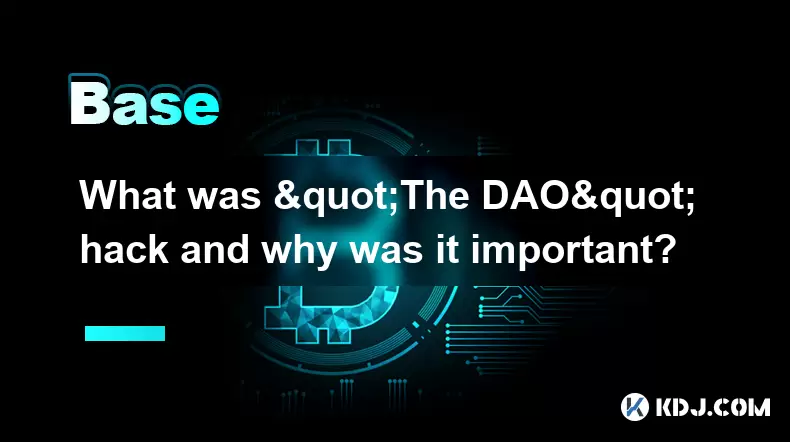
What was "The DAO" hack and why was it important?
Jul 19,2025 at 09:08pm
Background of 'The DAO''The DAO' (Decentralized Autonomous Organization) was a venture capital fund built on the Ethereum blockchain, launched in Apri...

What is the Inter-Blockchain Communication Protocol (IBC)?
Jul 19,2025 at 10:43am
Understanding the Inter-Blockchain Communication Protocol (IBC)The Inter-Blockchain Communication Protocol (IBC) is a cross-chain communication protoc...

How does sharding improve scalability?
Jul 20,2025 at 01:21am
Understanding Sharding in BlockchainSharding is a database partitioning technique that is increasingly being adopted in blockchain technology to enhan...

What is the "crypto trilemma" of scalability, security, and decentralization?
Jul 19,2025 at 06:28pm
Understanding the Concept of the Crypto TrilemmaThe crypto trilemma refers to the challenge of simultaneously achieving scalability, security, and dec...

How to get a job in crypto?
Jul 20,2025 at 08:14am
Understanding the Crypto Industry LandscapeThe cryptocurrency industry is a rapidly evolving space that includes blockchain technology, decentralized ...

What is slashing in proof-of-stake?
Jul 20,2025 at 06:07am
Understanding Slashing in Proof-of-StakeIn a Proof-of-Stake (PoS) blockchain network, slashing refers to the penalty mechanism used to deter validator...

What was "The DAO" hack and why was it important?
Jul 19,2025 at 09:08pm
Background of 'The DAO''The DAO' (Decentralized Autonomous Organization) was a venture capital fund built on the Ethereum blockchain, launched in Apri...
See all articles

























